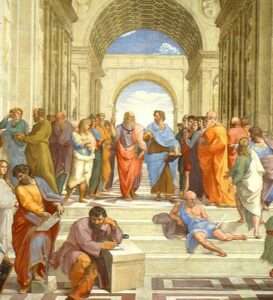Opera is a captivating art form that combines music, drama, and spectacle in a unique and powerful way. It originated in Italy at the end of the 16th century and has since evolved into a diverse genre with a rich history and a significant cultural impact. The term “opera” comes from the Italian word for “work”, reflecting the collaborative nature of this art form. It involves the efforts of a composer, a librettist, singers, musicians, and often dancers and visual artists.
Opera’s importance and impact on culture cannot be overstated. It has been a vehicle for expressing societal and political issues, a platform for showcasing vocal virtuosity, and a source of entertainment for audiences worldwide. Opera has also influenced other art forms, including film and popular music. For more on the basics of opera, you can discover more about opera with this beginner’s guide.
The Evolution of Opera
Opera’s evolution can be traced back to its early beginnings and Italian opera. The first operas were composed in Florence in the late 16th century, with Jacopo Peri’s “Dafne” often considered the first. Italian opera set the standard for the form, with the works of composers like Monteverdi, Rossini, Verdi, and Puccini still performed today.
French opera emerged in the 17th century, offering a distinct style that emphasized dance and spectacle. Jean-Baptiste Lully and Jean-Philippe Rameau were key figures in its development. In the 19th century, English-language opera began to flourish, with composers like Gilbert and Sullivan creating works that combined humor, wit, and social commentary.
The transformation of modern opera has been marked by increased diversity in musical style and subject matter. Contemporary composers have explored new narrative structures and incorporated influences from jazz, popular music, and non-Western musical traditions. Today, opera continues to evolve, reflecting the changing world in which it is created. For a deeper dive into the history of opera, you can explore the Metropolitan Opera’s offerings.
The Components of Opera
At the heart of every opera are its music and dramatic roles. The music, composed specifically for the work, conveys the emotional depth of the story and characterizes the individuals on stage. The dramatic roles, performed by singers, bring the narrative to life. These roles are often categorized by vocal range (soprano, mezzo-soprano, tenor, baritone, bass) and character type (hero, heroine, villain, sidekick).
Understanding the score of a musical drama is crucial to appreciating opera. The score is the written version of the music, including both the vocal lines sung by the performers and the instrumental parts played by the orchestra. It serves as the blueprint for the performance, guiding the conductor, singers, and musicians in their interpretation of the work.
The orchestra plays a significant role in opera, providing the instrumental music that accompanies the singers. The orchestra can create a wide range of musical effects, from the subtlest emotional nuance to the grandest dramatic climax. For more on the components of opera, you can discover more about opera with this beginner’s guide.
Opera Houses and Companies
Opera houses are the venues where operas are performed. Some of the most famous opera houses around the world include the Teatro alla Scala in Milan, the Royal Opera House in London, the Metropolitan Opera in New York, and the Sydney Opera House in Australia. These venues are renowned for their architectural beauty, acoustical quality, and the high standard of their productions.
Opera companies are the organizations that produce and perform operas. They include large, internationally recognized companies like the Metropolitan Opera, the Royal Opera, and La Scala, as well as smaller regional companies that play vital roles in their local arts communities. These companies are responsible for every aspect of an opera production, from the initial concept and design to the final performance.
Opera vs. Other Art Forms
When compared to other art forms like theatre, ballet, and symphony, opera stands out for its combination of music, drama, and visual spectacle. While theatre relies primarily on spoken dialogue, ballet on dance, and symphony on instrumental music, opera brings these elements together in a unique synthesis.
The unique aspects of opera include its use of the human voice as a dramatic and musical instrument, its integration of various art forms, and its ability to convey a wide range of human emotions through music and drama.


